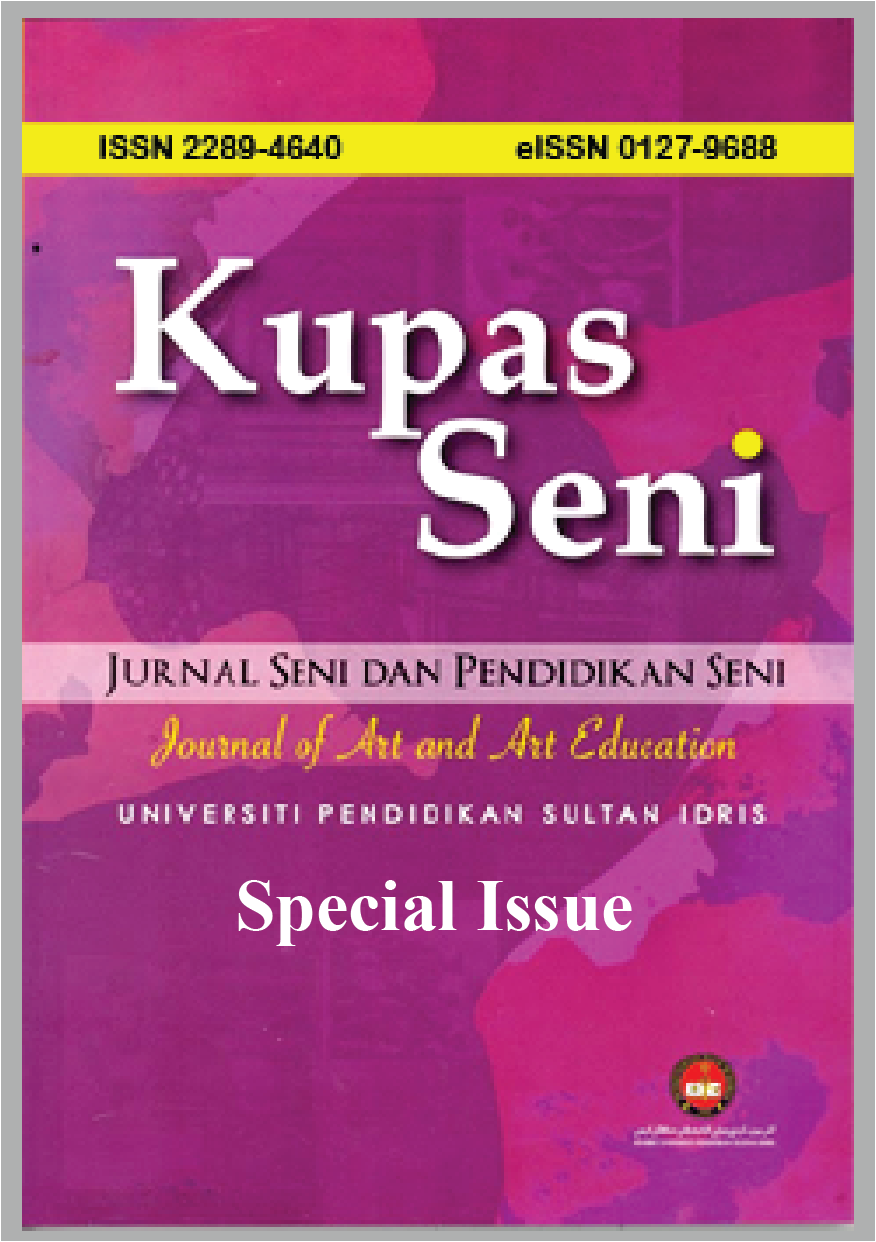Visual Diary as a tool for Idea Generation for Graphic Design Study Program
DOI:
https://doi.org/10.37134/kupasseni.vol11.sp.12.2022Keywords:
Diary, Idea generation, Visual, Design thinking and Visual literacyAbstract
This study is to explore visual diary as a tool that allows students to express their multiple creative views and their abilities in generating ideas. This tool has been integrated as part of the selected students’ assignments and projects as a practice in the creative arts education. Many of them were taught to sketch, doodle and experiment in different drawing techniques. Nonetheless, many of them are facing the problem of lack of knowledge and understanding in the ideation process. A total of 35 visual diaries were selected, one each from a pool of 35 students in the graphic design program. The samples in this study were 35 (N=35) students who were enrolled to pursue the visual communication module in the first year of the graphic design program. The research was conducted at the researcher’s university, being a private institution located in Kuala Lumpur. The main tool for data collection was an assessment rubric, namely, the Ideo assessment. The quantitative data from the IDEO assessment was analyzed using descriptive statistics. From the findings, it can be concluded that through the visual diary, students have shown greater understanding in the design process and that continued efforts should be made to improve, develop, and explore ideas in using the visual diary as an instructional tool for the students’ assignments and projects.
Downloads
References
Amabile, T. M. (1988). A model of creativity and innovation in organizations. Res. Organ. Behav. 10, 123–167.
Amabile, T. M. (1996). Creativity in Context. Boulder, CO: Westview Press.
Arlin, P. K. (1986). “Problem finding and young adult cognition,” in Adult Cognitive Development: Methods and Models, eds R. A. Mines and K. S. Kitchener (New York, NY: Praeger), 22–32.
Aurum, A., & Gardiner, A. (2013). 3 Creative Idea Generation. Retrieved from https://pdfs.semanticscholar.org/1fc4/649055b30a4ac969c495cfb823b85fc60476.pdf?_ga=2.106780419.1458117640.1563294965-2118514277.1562628613
Bernabei, R. (2010). The Digital Visual Diary: the blog as an alternative for paper and pen in the Industrial Design studio. 28 June-1 July, 2010. University of New South Wales, Sydney, Australia.
Brown, T. (2002). design thinking define. Retrieved from designthinking.ideo.com/:https://designthinking.ideo.com/
Brown, T. (2008). Design thinking. Harvard business review, 86(6), 84.
Chan, J., Dow, S. P., & Schunn, C. D. (2015). Do the best design ideas (really) come from conceptually distant sources of inspiration? Design Studies, 36, 31–58.
Cross, N. (2001). Creativity in the design process: co-evolution of problem– solution. Design Studies, 22(5), 425–437.
Cross, N. (2006). Designerly ways of knowing. London: Springer.
Cross, N. (2011). Design thinking: Understanding how designers think and work. Oxford: Berg.
Dorst, K. (2011). The core of ‘design thinking’and its application. Design Studies, 32(6), 521–532.
Hongik, C. S., Hongik, S. J., & Hongik, K. N. (2016). Configuring Time for Creativity: How to Optimize the Ideation Process in Design Thinking Workshops. The International Journal of Design Management and Professional Practice, 10(4), 25-33.
Lawson, B. (2005). How Designers Think: The Design Process Demystified. Architectural Press, 4th edition.
Lupton, E., & Phillips, J. C. (2008). Graphic design thinking: How to define problems, get ideas & create form. NY: Princeton Architectural Press, 93p.
Scott, S. (2010). Visual journaling towards greater meaning making in the secondary art classroom. (Master dissertation). Available from Proquest Dissertations and Theses database. (UMI No. 1484118)
Vogel, T. (2014). Breakthrough Thinking: A guide to creative thinking and idea generation. Simon and Schuster.





